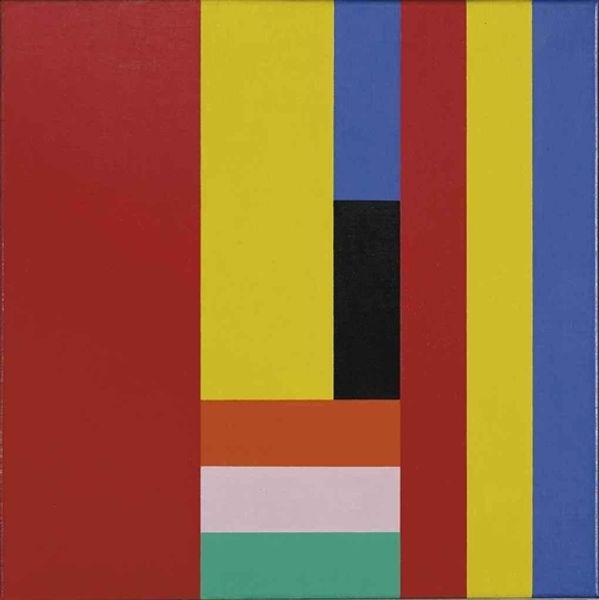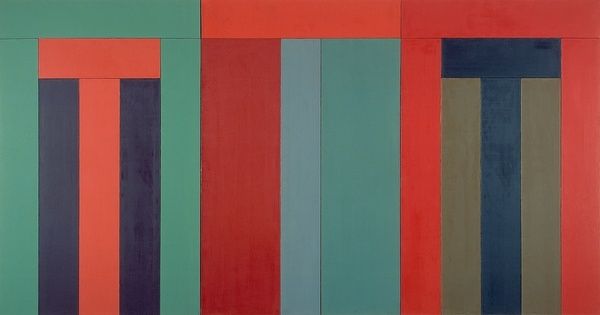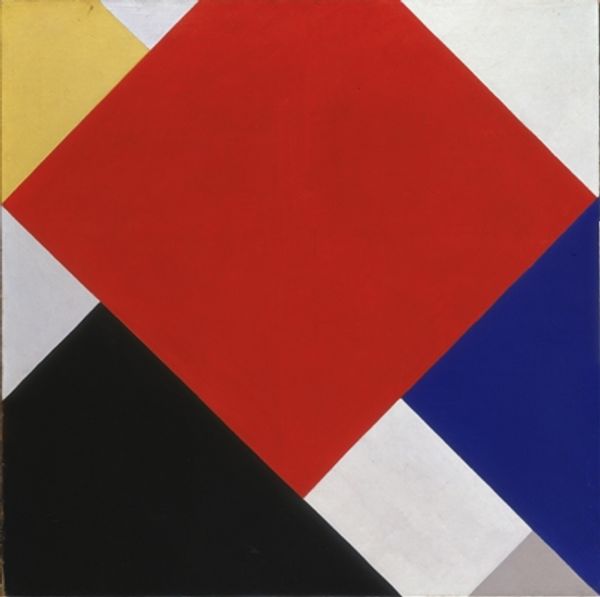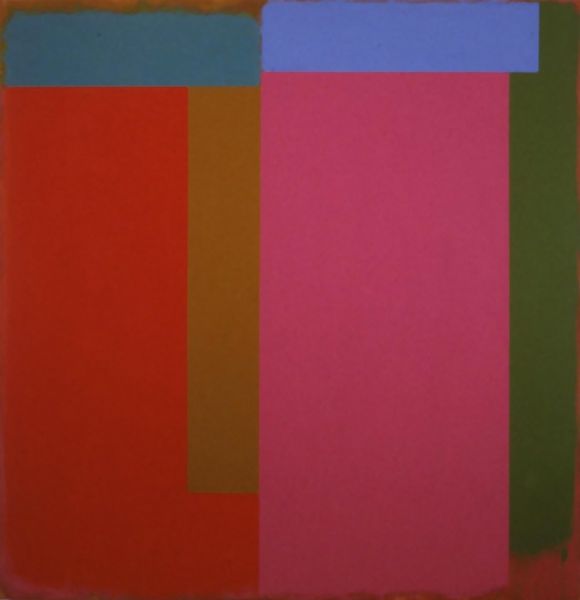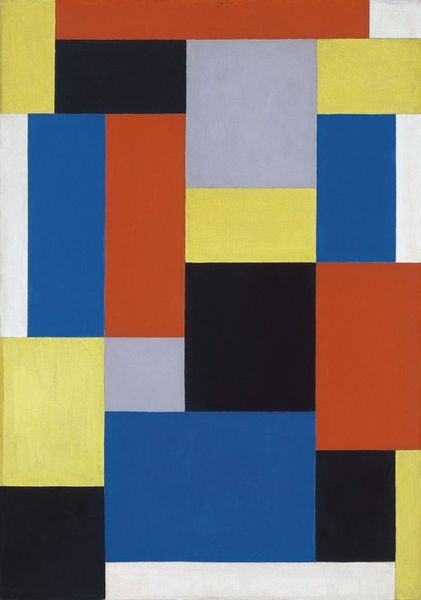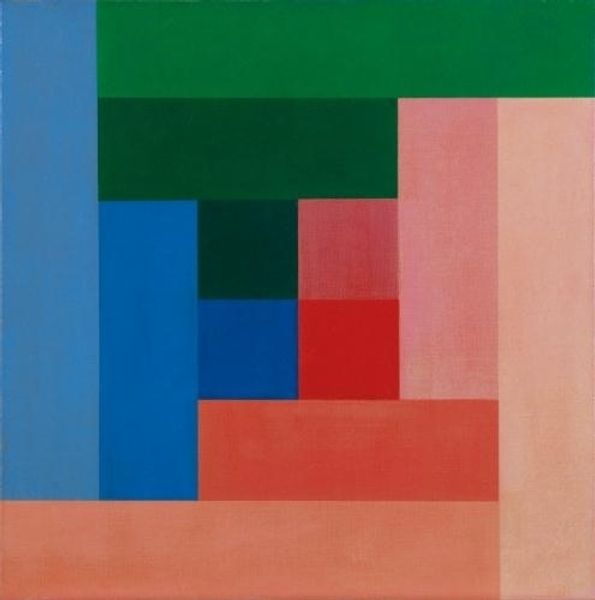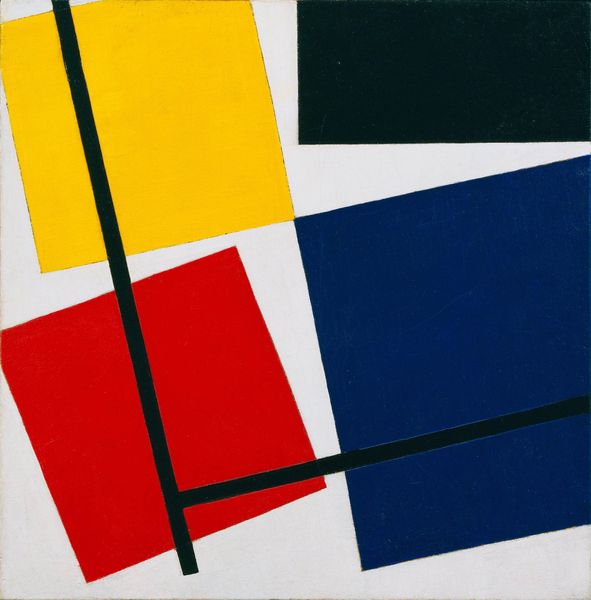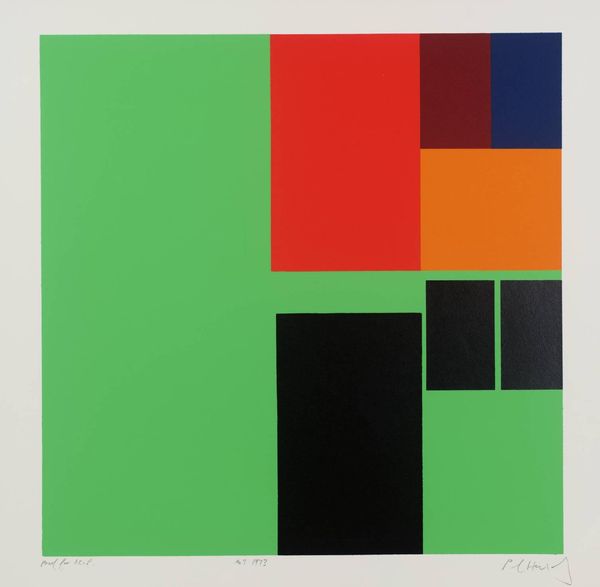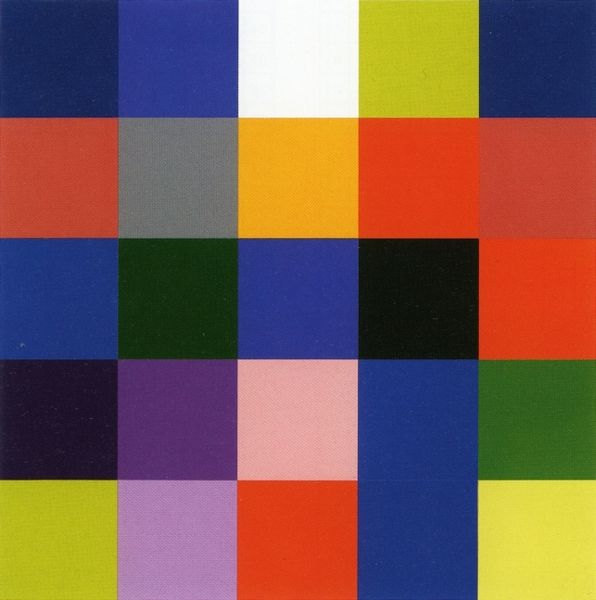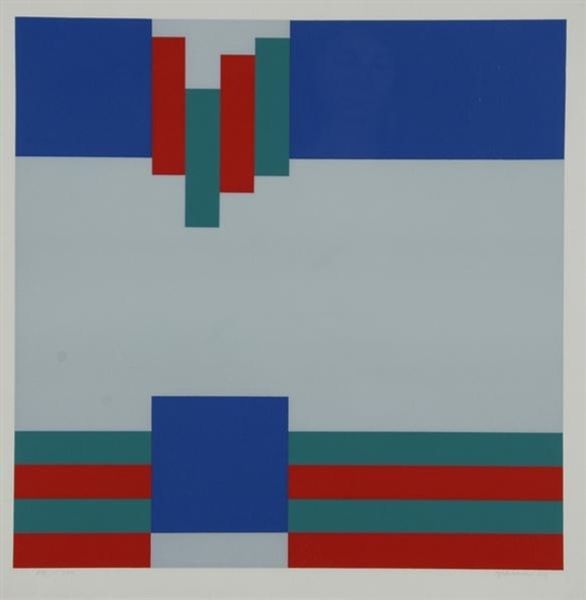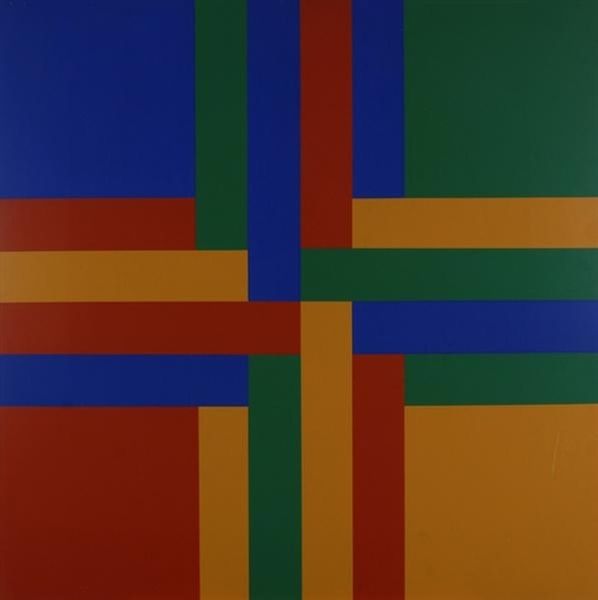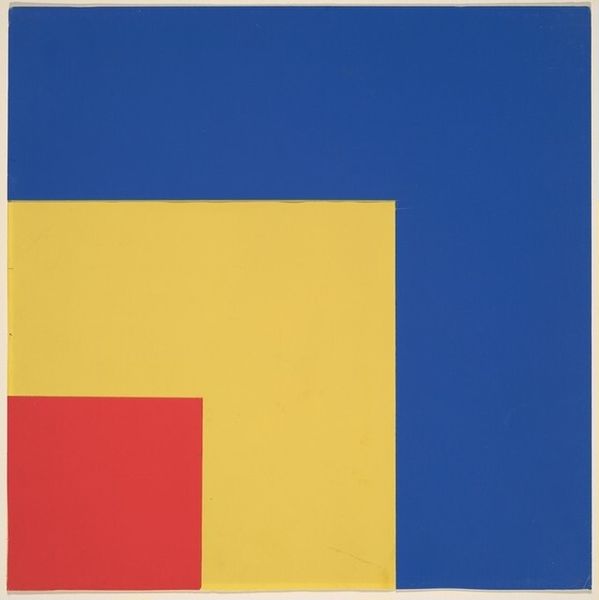
painting, acrylic-paint
#
concrete-art
#
painting
#
acrylic-paint
#
geometric pattern
#
geometric-abstraction
#
abstraction
#
modernism
Copyright: Camille Graeser,Fair Use
Editor: Here we have "Rote Dominante," a 1957 painting by Camille Graeser, done in acrylic paint. The geometric composition feels quite controlled, and almost like a study in colour relationships. How would you interpret this piece? Curator: The controlled feel isn't accidental. Consider Graeser's commitment to Concrete Art. For him, painting was a meticulous construction. Acrylic paint itself becomes central. It allows for a smooth, uniform surface, eliminating visible brushstrokes and any sense of the artist's hand or spontaneous gesture. We see the rejection of gestural abstraction, popular at the time. Editor: So the acrylic allows for a mass-produced feel, which moves away from individual expression? Curator: Precisely. Look at how he uses this medium. It rejects the romantic idea of the artist as a tormented genius, sweating over the canvas. Instead, there is a focus on a methodical process, the calculated arrangement of colours and shapes according to pre-determined rules. We have to think about art-making as labor, almost an industrial process where paint, surface and careful construction replace traditional ideas of artistic genius. Editor: It's fascinating how the choice of material and process redefines what we consider 'art'. What was the intended function of this art? Curator: That is something worth asking. By reducing painting to its material elements and geometric arrangements, Concrete Art proposed a kind of universal visual language. However, did that become another commodity? Graeser worked in advertising before becoming a full-time artist. His formal vocabulary seems very appropriate for modernist design principles as well. Editor: So the painting almost occupies an ambiguous position, critiquing and feeding into consumerism simultaneously. I'll definitely think more about materials as choices with their own social contexts. Curator: Agreed. The social implications and labor put into materials matter!
Comments
No comments
Be the first to comment and join the conversation on the ultimate creative platform.
